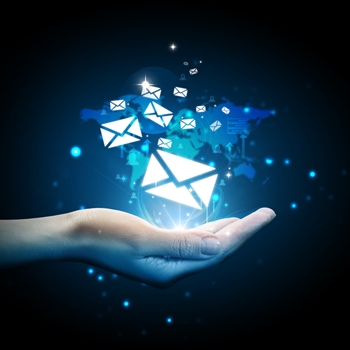 Even though it’s been around for a while, email marketing is still one of the best ways to attract new customers and build strong relationships with clients. Many marketers have moved on to other digital tactics, but email is a tried and true technique that drives results and offers a high return on investment. Like many other marketing channels, email has changed over time. Here are some ways that emails will likely be used in 2015 for lead generation:
Even though it’s been around for a while, email marketing is still one of the best ways to attract new customers and build strong relationships with clients. Many marketers have moved on to other digital tactics, but email is a tried and true technique that drives results and offers a high return on investment. Like many other marketing channels, email has changed over time. Here are some ways that emails will likely be used in 2015 for lead generation:
1. Mobile responsive messages will be mandatory
Mobile website traffic surged in 2014. More people are using their smartphones to check email, search the Web and browse their social networks than ever before. Not accommodating mobile users is a crucial error for any marketer, even in the business-to-business sector. Subscribers expect to be able to easily view emails from any device. Poorly designed mobile emails take a long time to load, and it may be difficult for users to click through to your website. Responsive emails can ensure all device users are able to view the message.
There are many ways to provide a better mobile experience, but responsive emails cannot be overlooked. For example, use buttons instead of links to make it easier for recipients to follow the call to action to your website. Limiting the number of images can improve loading times as well, according to Entrepreneur magazine. Be sure to include enough distance between clickable elements of an email to prevent recipients from hitting the wrong button by mistake.
2. Give options for email frequency when customers subscribe
Emailing clients too often is a sure way to alienate them and cause them to unsubscribe from your list, Business 2 Community pointed out. Successful email campaigns account for customer preferences. While these likely vary across your list, you can create a more personalized experience by allowing subscribers to tell you how often they would like to receive messages. When people opt in to your list, you can ask them to confirm their subscription and select their desired email frequency.
3. More advanced targeting
You can create more effective campaigns if you split your list into different segments. This ensures each group receives communications that are more relevant to their interests. This is especially important in B2B marketing because prospects may be spread out across the different stages of the sales cycle. Segmenting users based on their interests or preferred email frequency can contribute to a more engaged list. The days of sending identical emails to all of your subscribers are over.
4. Marketing campaigns need to speed up
Technology is making everything happen at a faster pace, and marketers need to catch up to their consumers, Click Z stated. People interact with content on the go. Your target audience has constant access to information. A quick response is critical for beating competitors. In 2015 and beyond, marketers will need access to multiple data sources that they can consolidate into their campaigns, as well as the ability to process information in real time.
Digital marketing is increasingly about the context of interactions. Customers may browse different content from their mobile devices on the go than they would from a desktop computer. For example, smartphones are used in a high number of local searches, which means geo-targeting may ensure users find more relevant search results. Advanced analytics will be needed to deliver this level of personalization in email marketing campaigns. Email can still be used in innovative ways now that marketers are moving beyond the days of the email blasts.

